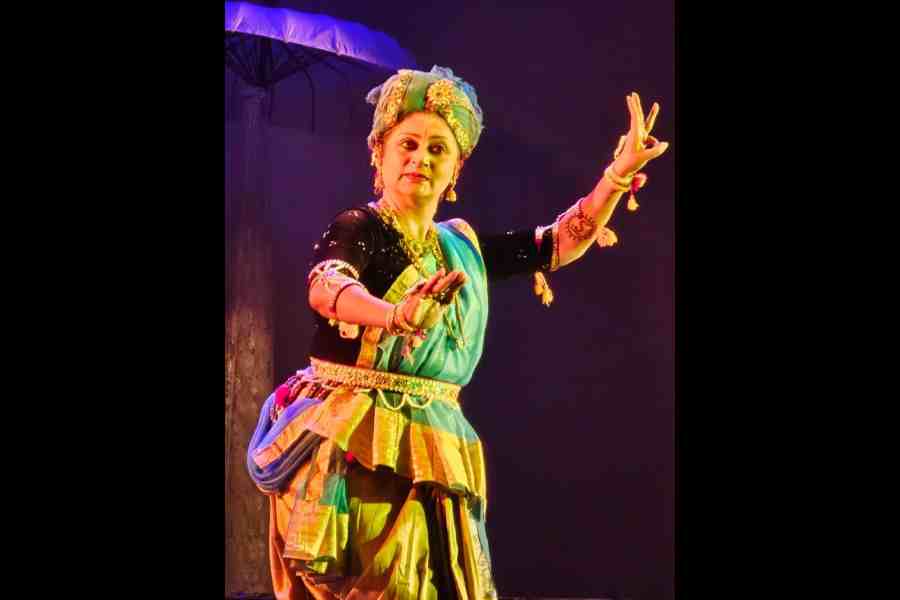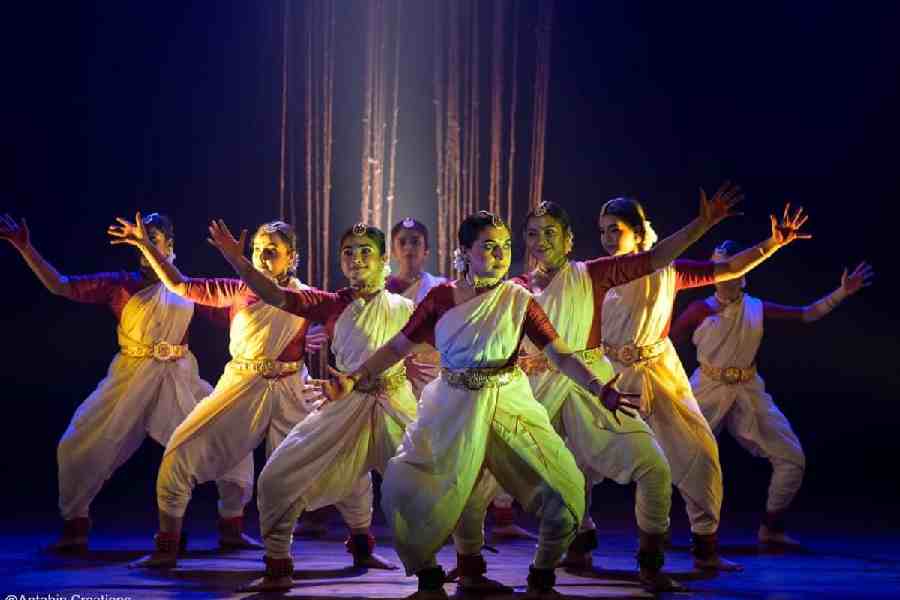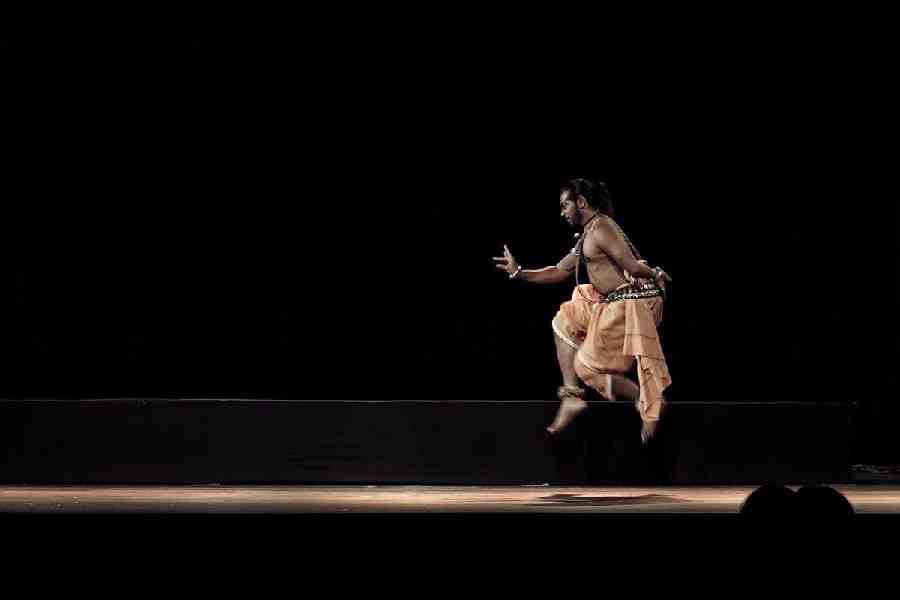With an elegantly supple body and remarkable control over the idiom and the nuances of Odissi, Krishnendu Saha presented an enthralling work titled Maya Manav at the Odissi Vision & Movement Centre’s performance space recently. The piece has the familiar tale of Rama and the golden deer, Mareech, at its core and is cleverly layered with metaphors about and meanings of longing, fulfilment and illusion. The material is complex and Sharmila Biswas’s choreography ensured that the story, profound as it is, pulsated with the dancer’s energetic retelling of it. Whether it was in the expansion and the contraction of the deer’s cavorting body as it ran in quicksilver speed through the forest chased by Rama, or in the fluid images of relentless pursuit as the object of desire inexorably moved further and further away, Saha was mesmerising.
His movements were hypnotic and his facial expressions exquisitely evocative. In the dimly-lit liminal space between shadows and illusions created in the studio, it was a close and thrilling encounter with the dancer’s exploration of human beings’ eternal quest for the unattainable. The choreography is based on the song, “Hema harini”, hauntingly rendered by Shyamamani Pattanaik, which draws from the well-known medieval literary work of Odisha titled Bichitra Ramayan. Saha consummately embodied the curiosity to scrutinise and the yearning to possess the object of desire, however intriguing or horrifying it may be. The overwhelming confusion and frustration to which such an expedition must inevitably lead added more complexity to the chase. Saha inhabited the centre stage easily and told the tale beguilingly. The minimal intimacy of the space offered an advantage: the dancer’s facial expressions can be observed from close quarters. And Saha ensures that it is a treat.
The other piece performed by him that evening, Dashavatar, choreographed by Sharmila Biswas, was also refreshing in its stark beauty and was a Darwinian inquiry into the Matsya-to-Kalki gradation of the avatars of Vishnu from small and simple creatures of the earth to the most complex and fearsome of them all. At the intersection of Saha’s fluid movements and Biswas’s superb choreography, the piece throbbed with compelling grace and vigour.
In Nandanik Movement Arts’ Nongi Ithin, part of the Horizon series presented by ICCR, Poushali Chatterjee’s exploration of the rhythms of rain allowed her to examine the taal cycles of Manipuri dance through Jagoi Raaslila, Nata Sankirtana, Thang Ta, and other ritualistic social and harvest dances.

Poushali Chatterjee in Nongi Ithin Nandanik Movement Arts
With pleasing references to stories about the monsoon and its impact on Earth, it was represented through a surge of ecstatic emotions that the rains bring in agricultural terrains. But the gleeful celebration eventually made way for the destruction caused by the collapse of embankments and consequent inundation. The evening also featured traditional pieces such as Mangalacharan, Vrindavan Varnan and Pung Vadan from the repertoire.

Jalsa Chandra’s Twamaham Vande Kathakali Jana
Jalsa Chandra’s Twamaham Vande at Gyan Manch was presented at Layavinyas’s dance and music festival, Anjali. The sacred was intertwined with the dramatic in this ambitious work that purported to look at theism through the lens of the Bhakti saints. Starting with mystical stories about creation, the piece moves through Kabir’s bhajan, Baul philosophy as represented by Lalon, Tulsidas’s bhajan and an abhang in the form of a ninda stuti that playfully criticises and laughs at one’s deity. In its contemporary classical format, the choreography meandered through many phases and turns.











